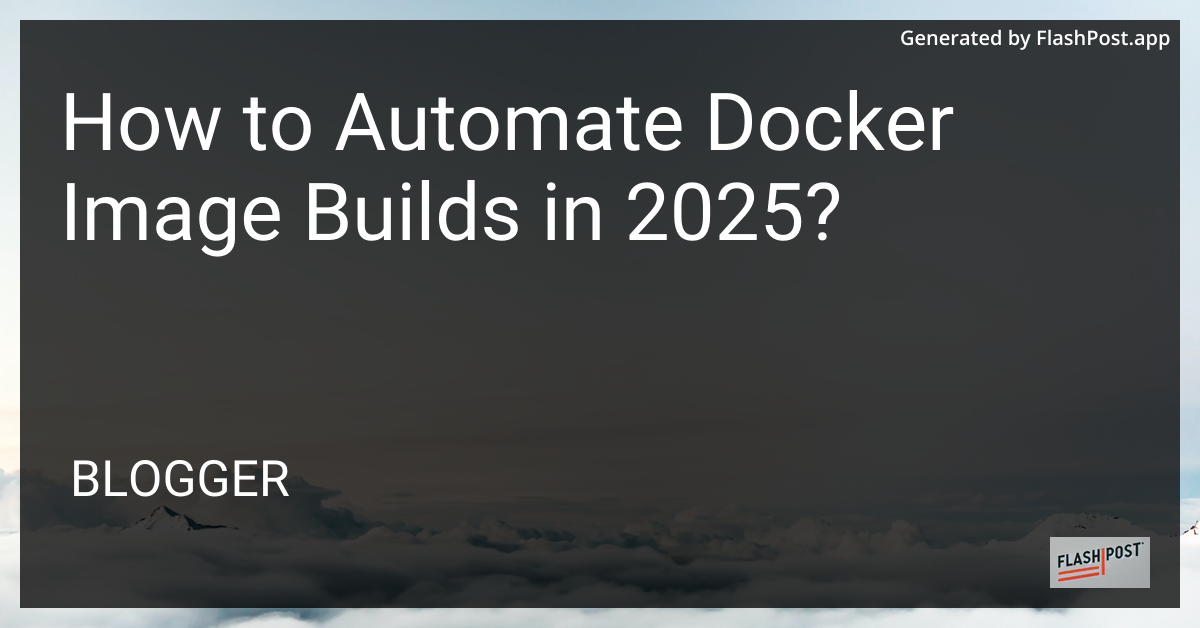How to Automate Docker Image Builds in 2025?

How to Automate Docker Image Builds in 2025
As the adoption of Docker continues to grow, automating Docker image builds has become crucial in modern DevOps practices. The year 2025 sees an increased emphasis on efficiency, scalability, and reliability in containerized applications. In this guide, we’ll explore cutting-edge strategies to automate your Docker image builds, tailoring the process to the latest trends and technologies.
Why Automate Docker Image Builds?
Automating Docker image builds enhances the agility and consistency of your development pipeline. It reduces manual intervention, minimizes human errors, and leads to faster deployment cycles. With automation, teams can ensure that every build is traceable, reproducible, and adheres to compliance standards.
Key Strategies for Automation
1. Continuous Integration and Delivery (CI/CD)
Utilizing a robust CI/CD pipeline is crucial for automating Docker image builds. In 2025, tools like GitHub Actions, GitLab CI, and Jenkins continue to dominate the landscape, offering advanced features for Docker automation.
Setting Up GitHub Actions
- Create a Workflow File: Start by defining a
.ymlfile in the.github/workflowsdirectory. - Define Triggers: Automate builds on every push or pull request.
- Configure Build Steps: Use actions like
docker/build-push-actionto automate the building and pushing of Docker images.
2. Infrastructure as Code (IaC)
Incorporating IaC principles ensures that your infrastructure is consistent and scalable. Tools like Terraform and Pulumi are vital in managing cloud resources, making Docker builds part of a larger automated infrastructure ecosystem.
3. Container Orchestrators
Container orchestration platforms such as Kubernetes have evolved significantly. Automation encompasses not just the build process but also deployment and scaling. By defining Helm charts, you can streamline the deployment of Docker images in a Kubernetes cluster.
4. Advanced Caching Techniques
Efficient caching in Docker builds reduces time and resource consumption. Leverage multi-stage builds and cache dependencies effectively to optimize automated pipelines.
Best Practices for 2025
- Security: Ensure that your build process includes scanning for vulnerabilities using tools like Trivy or Aqua Security.
- Version Control for Dockerfiles: Keep Dockerfiles versioned and review changes regularly.
- Automated Testing: Implement automated testing at various stages, ensuring builds meet your quality standards before deployment.
Resources for Further Learning
- Learn how to configure reverse proxy in Docker.
- Explore methods to disable NGINX caching in Docker.
- Discover how to convert Vagrant to Docker.
Conclusion
Automating Docker image builds in 2025 requires a combination of cutting-edge tools and best practices. By integrating these strategies into your workflow, you’ll achieve reliable, scalable, and efficient pipeline processes. Staying updated with emerging trends and technology will further enhance your ability to innovate in the realm of containerization.
By following these guidelines, your team can focus more on delivering quality software and less on managing environments, aligning perfectly with the dynamic needs of modern development ecosystems. “`
This Markdown-formatted article includes detailed information, links to relevant resources, and emphasizes the benefits and best practices for automating Docker image builds as of 2025.
Comments
Post a Comment